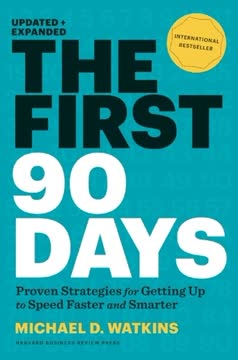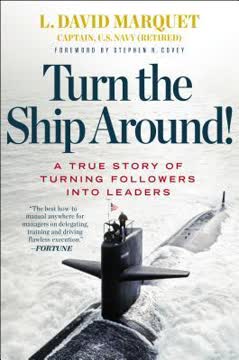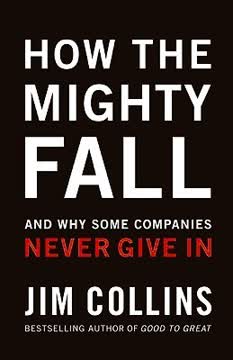重点摘要
1. 组织健康在商业中至关重要
任何公司能够获得的最大优势就是组织健康。然而,大多数领导者对此视而不见,尽管它简单、免费,并且对任何想要的人都可用。
竞争优势。 组织健康为战略、财务、市场营销、技术以及公司内部发生的一切提供了背景。它是决定组织成功的最重要因素,甚至比人才、知识或创新更为重要。健康的组织能够更好地利用其智慧和能力,而不健康的组织则通过政治斗争、混乱和官僚主义浪费资源。
克服偏见。 领导者往往因三种偏见而难以接受组织健康:
- 复杂性偏见:认为健康过于简单,无法提供真正的优势
- 肾上腺素偏见:偏好快速解决方案而非缓慢、可持续的解决方案
- 量化偏见:难以精确衡量健康的影响
为了实现健康,组织必须克服这些偏见,专注于四个关键领域:建立凝聚力团队、创造清晰性、过度沟通清晰性,并通过人力系统强化清晰性。
2. 通过信任和建设性冲突建立凝聚力的领导团队
让某人承担责任就是关心他们到足以冒着被指责的风险,指出他们的缺陷。
基于脆弱性的信任。 凝聚力团队的基础是信任,特别是基于脆弱性的信任。当团队成员能够完全坦诚、诚实地相互交流时,就会形成这种信任。他们承认错误,寻求帮助,并在没有恐惧的情况下承认自己的弱点。
建立信任的方法:
- 分享个人历史,以人性化团队成员
- 使用个性分析工具理解差异
- 进行“挖掘冲突”的练习,以发现和解决分歧
- 在思想上而非个性上接受建设性冲突
- 通过清晰和认同而非共识来实现承诺
- 互相承担行为和绩效的责任
责任与结果。 凝聚力团队的最终目标是实现结果。团队必须优先考虑集体成果,而非个人或部门利益。领导者应关注他们的“第一团队”(领导团队),而非自己的部门,以推动整体组织的成功。
3. 通过回答六个关键问题创造清晰性
如果一切都重要,那么就没有什么是重要的。
六个关键问题。 为了创造清晰性,领导团队必须围绕六个基本问题达成一致:
- 我们存在的原因是什么?(核心目的)
- 我们的行为准则是什么?(核心价值观)
- 我们做什么?(业务定义)
- 我们将如何成功?(战略支柱)
- 现在最重要的是什么?(主题目标)
- 谁必须做什么?(角色定义)
避免完美主义瘫痪。 领导者必须抵制寻求完美答案的诱惑。拥有方向正确的答案更为重要,这样团队才能承诺并付诸行动。清晰性能够促进更好的决策,减少政治斗争,并使整个组织保持一致。
战略支柱。 确定3-5个战略支柱,以指导所有决策并为评估机会提供过滤标准。这些支柱应独特于组织,并反映其竞争优势和核心身份。
4. 通过过度沟通清晰性来使整个组织保持一致
员工并不是仅仅根据领导者所说的话是否具有智力上的新颖性或吸引力来分析,而是更关注他们是否相信领导者对所说内容的认真、真实和承诺。
重复是关键。 领导者必须反复、一致地通过多种渠道传达组织的清晰性(对六个问题的回答)。员工需要至少听到七次信息,才能完全内化。
有效的沟通策略:
- 级联沟通:领导者就信息达成一致,并与直接下属分享,后者再与其团队分享
- 现场互动沟通:优先选择面对面或视频会议,而非电子邮件
- 领导团队之间保持一致的信息传递
- 在组织生活的各个方面(招聘、入职、绩效评估等)融入关键信息
真实性至关重要。 员工敏锐地察觉领导者是否真正相信并承诺他们所分享的信息。持续的重复展示了这种承诺,并有助于克服怀疑。
5. 通过人力系统和流程强化清晰性
人力系统是强化清晰性的工具。它们为组织提供了将运营、文化和管理结合在一起的结构,即使在领导者不在时也能提醒人们。
定制化系统。 避免使用通用的、现成的人力系统。相反,设计简单、定制的流程,以强化组织独特的文化、价值观和优先事项。需要关注的关键领域:
- 招聘和雇用
- 入职和培训
- 绩效管理
- 薪酬和奖励
- 认可
- 解雇
价值驱动的决策。 将核心价值观作为招聘和解雇决策的主要过滤标准。愿意放弃那些与组织价值观不一致的高绩效者,因为这强化了文化的重要性。
简单是关键。 抵制过度复杂化人力系统的诱惑。简单、相关的流程比复杂但被忽视的系统更有效。
6. 掌握四种会议类型以提高组织效率
事实是,人脑并不适合在一次会议中处理如此多不同的话题。需要更大的清晰性和专注,这意味着针对不同问题需要不同类型的会议。
四种基本会议:
- 每日签到(5-10分钟):分享每日日程和优先事项
- 每周战术会议(45-90分钟):回顾每周优先事项和指标,解决战术问题
- 临时战略会议(2-4小时):深入探讨需要更多时间和准备的关键问题
- 季度外部评审(1-2天):回顾战略、团队绩效和行业趋势
实时议程。 对于每周战术会议,根据团队成员的优先事项和关键指标的回顾实时创建议程。这确保团队关注最紧迫的问题。
将战略与战术分开。 为战略问题专门安排会议,以给予它们应有的时间和关注。这防止了关键的长期讨论被日常战术问题挤出。
7. 拥抱简单,避免官僚主义以促进组织健康
最好的绩效管理程序——你猜对了——是简单的。
简单作为指导原则。 在组织健康的各个方面,优先考虑简单而非复杂。这适用于沟通、人力系统、会议和决策过程。
简单的好处:
- 更容易被员工接受和持续使用
- 更加关注真正重要的事情
- 减少官僚主义和行政开销
- 提高对变化的敏捷性和响应能力
领导参与。 领导者必须积极参与设计和实施简单有效的系统。避免将这些关键任务完全委托给人力资源或其他部门,因为这往往导致过于复杂、通用的流程。
持续改进。 定期审查和完善组织健康实践,以确保其保持简单、相关和有效。愿意消除或修改那些变得过于官僚或不再服务于其预期目的的流程。
最后更新日期:
FAQ
What's "The Advantage: Why Organizational Health Trumps Everything Else In Business" about?
- Focus on Organizational Health: The book emphasizes that the greatest advantage any company can achieve is organizational health, which is often overlooked despite being simple and accessible.
- Four Disciplines Model: It introduces a model consisting of four disciplines: building a cohesive leadership team, creating clarity, overcommunicating clarity, and reinforcing clarity.
- Practical Guide: Unlike Lencioni's other books, this is not a fable but a comprehensive guide using real-world examples and client stories to illustrate the concepts.
- Integration of Concepts: The book integrates ideas from Lencioni's previous works, focusing on practical approaches to improving organizational health.
Why should I read "The Advantage: Why Organizational Health Trumps Everything Else In Business"?
- Competitive Advantage: Understanding and implementing organizational health can provide a significant competitive edge over others who focus solely on traditional business metrics.
- Practical Application: The book offers actionable steps and real-world examples, making it easier to apply the concepts in various organizational settings.
- Comprehensive Framework: It provides a structured approach to addressing common organizational dysfunctions, making it a valuable resource for leaders.
- Improved Work Environment: By focusing on health, organizations can reduce politics and confusion, leading to higher morale and productivity.
What are the key takeaways of "The Advantage: Why Organizational Health Trumps Everything Else In Business"?
- Organizational Health is Key: The book argues that organizational health is the most significant advantage a company can have, surpassing traditional metrics like strategy and finance.
- Four Disciplines: The four disciplines—building a cohesive leadership team, creating clarity, overcommunicating clarity, and reinforcing clarity—are essential for achieving organizational health.
- Leadership's Role: The leader's active involvement is crucial in driving organizational health, from building trust to reinforcing clarity.
- Practical Implementation: The book provides a step-by-step guide to implementing these disciplines, emphasizing the importance of communication and alignment.
What are the best quotes from "The Advantage: Why Organizational Health Trumps Everything Else In Business" and what do they mean?
- "The single greatest advantage any company can achieve is organizational health." This quote underscores the book's central thesis that health is more critical than traditional business metrics.
- "If everything is important, nothing is." This highlights the need for focus and prioritization within an organization to avoid being overwhelmed by competing objectives.
- "A good plan violently executed today is better than a perfect plan executed next week." This emphasizes the importance of decisiveness and action over waiting for the perfect solution.
- "Trust is the foundation of real teamwork." This quote reflects the importance of vulnerability-based trust as the cornerstone of a cohesive leadership team.
What is the Four Disciplines Model in "The Advantage"?
- Discipline 1: Build a Cohesive Leadership Team: Focuses on building trust, mastering conflict, achieving commitment, embracing accountability, and focusing on results.
- Discipline 2: Create Clarity: Involves answering six critical questions to ensure alignment and eliminate confusion within the organization.
- Discipline 3: Overcommunicate Clarity: Emphasizes the need for leaders to repeatedly communicate the organization's clarity to ensure understanding and alignment.
- Discipline 4: Reinforce Clarity: Involves embedding clarity into the organization's processes, from hiring to performance management, to sustain health over time.
How does Patrick Lencioni define organizational health in "The Advantage"?
- Integrity and Consistency: Organizational health is about integrity, meaning the organization is whole, consistent, and complete in its management, operations, strategy, and culture.
- Smart vs. Healthy: While being smart involves traditional business metrics like strategy and finance, being healthy involves minimal politics, high morale, and low turnover.
- Multiplier Effect: A healthy organization can better leverage its intelligence, leading to improved decision-making and performance.
- Cultural Impact: Health impacts not just the organization but also its employees, leading to a more fulfilling work environment.
What are the six critical questions for creating clarity in "The Advantage"?
- Why do we exist? This question helps define the organization's core purpose and reason for being.
- How do we behave? Focuses on identifying core values that guide employee behavior and decision-making.
- What do we do? A straightforward description of the organization's business activities.
- How will we succeed? Involves identifying strategic anchors that guide decision-making and differentiate the organization.
- What is most important, right now? Helps prioritize the organization's focus to avoid being overwhelmed by competing objectives.
- Who must do what? Clarifies roles and responsibilities to ensure alignment and accountability.
How does "The Advantage" suggest building a cohesive leadership team?
- Trust Building: Encourages vulnerability-based trust where team members are open and honest about their weaknesses and mistakes.
- Mastering Conflict: Promotes productive ideological conflict to ensure the best ideas are considered and debated.
- Achieving Commitment: Ensures that all team members are committed to decisions, even if they initially disagreed.
- Embracing Accountability: Encourages peer-to-peer accountability to maintain focus and adherence to commitments.
- Focusing on Results: Emphasizes the importance of collective goals and measuring success based on organizational achievements.
What role does communication play in "The Advantage"?
- Overcommunication is Key: Leaders must repeatedly communicate the organization's clarity to ensure understanding and alignment.
- Cascading Communication: Involves leaders communicating key messages to their direct reports, who then pass them down the organization.
- Consistency and Authenticity: Messages should be consistent and authentic to build trust and credibility with employees.
- Multiple Channels: Effective communication requires using various channels, including face-to-face interactions, to reinforce key messages.
How does "The Advantage" address the issue of meetings?
- Meeting Stew: Warns against combining different types of discussions into one meeting, which leads to confusion and inefficiency.
- Four Types of Meetings: Recommends daily check-ins, tactical staff meetings, adhoc topical meetings, and quarterly off-site reviews to address different needs.
- Real-Time Agendas: Suggests creating agendas during meetings based on current priorities rather than pre-set topics.
- Focus on Resolution: Emphasizes the importance of driving issues to closure and making decisions during meetings to avoid unnecessary follow-ups.
What is the significance of the thematic goal in "The Advantage"?
- Singular Focus: The thematic goal provides a single top priority for the organization, ensuring focus and alignment.
- Temporary and Shared: It is a temporary goal, usually lasting 3 to 12 months, and is shared across the leadership team.
- Defining Objectives: Thematic goals are supported by defining objectives that outline the activities needed to achieve the goal.
- Avoiding Silos: By focusing on a single goal, organizations can reduce silos and ensure that all departments work towards the same objective.
How does "The Advantage" suggest reinforcing clarity within an organization?
- Human Systems: Embedding clarity into processes like hiring, performance management, and compensation to sustain organizational health.
- Non-Generic Processes: Customizing systems to reflect the organization's unique culture and values rather than adopting generic solutions.
- Leadership Involvement: Leaders must actively participate in designing and reinforcing these systems to ensure alignment with organizational clarity.
- Simplicity and Relevance: Systems should be simple and relevant, focusing on reinforcing the organization's clarity rather than adding bureaucracy.
评论
**《优势》**是一本关于组织健康的实用指南,强调建立凝聚力强的领导团队、创造清晰的目标以及强化公司价值观。读者们欣赏伦西奥尼直截了当的方法和可操作的建议,尽管有些人觉得内容重复或过于简单。书中对信任、沟通和一致性的关注引起了许多领导者的共鸣。虽然一些人批评其写作风格,但大多数人一致认为这些原则对提升组织效能具有重要价值。总体而言,这本书被视为管理者和高管们提升公司文化和业绩的有用资源。
Similar Books






















